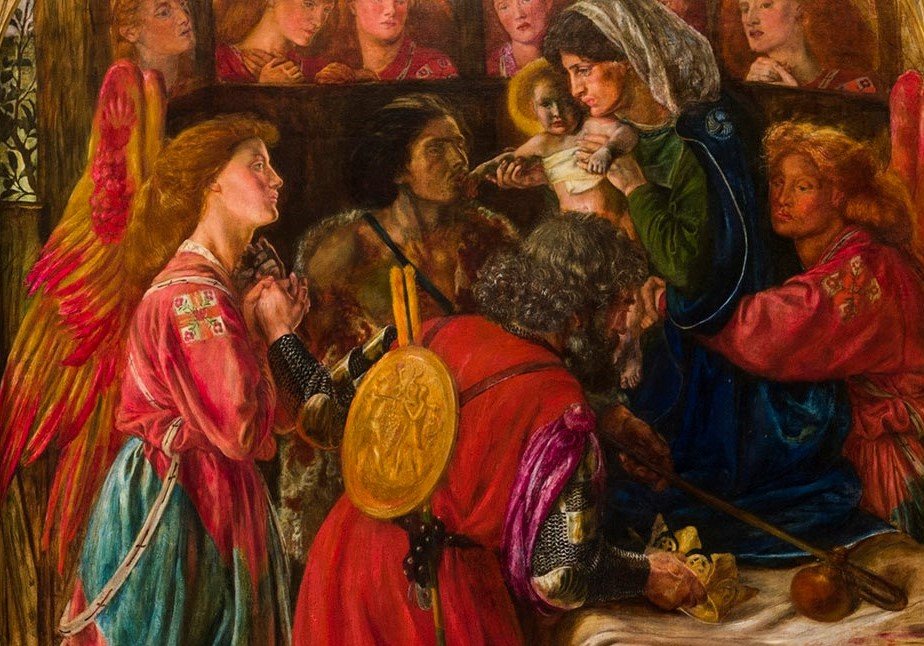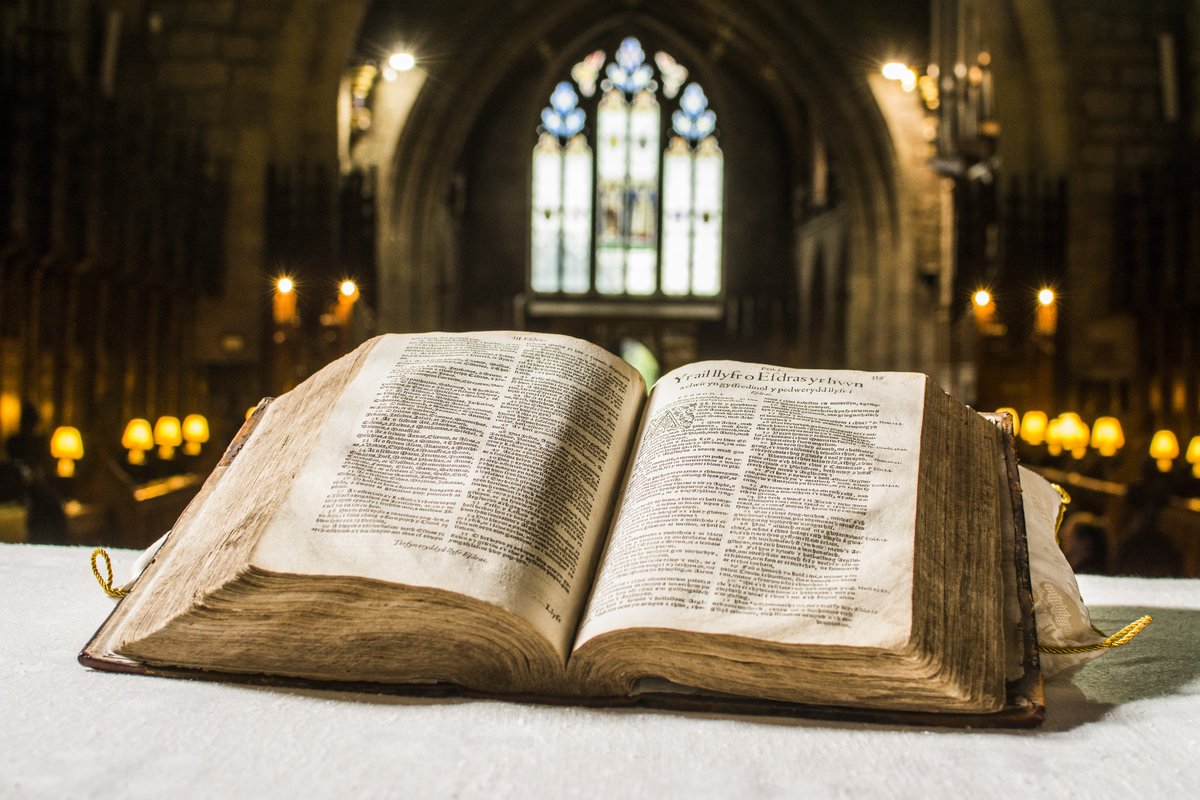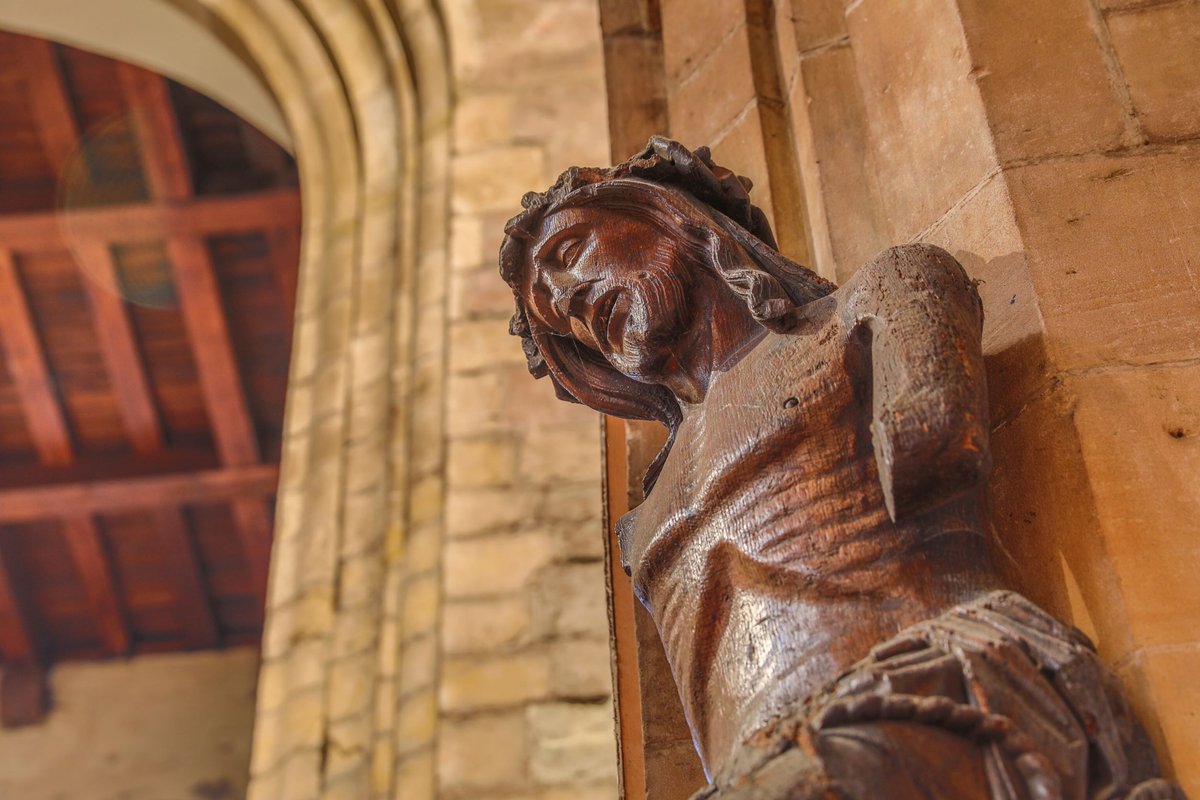Treasures from Wales’ cathedrals revealed in new book

The first Bible in the Welsh language and a pre-Raphaelite work of art are among the treasures from Wales’ cathedrals showcased in a new book.
The stories of 50 remarkable artefacts, preserved by the cathedrals of the Church in Wales and the Church of England, feature in the book, called Deans’ Choice: Cathedral Treasures of England and Wales. Each treasure was chosen and described by the Dean, or senior clergy, of the cathedral featured and the book was compiled by Janet Gough, a Canon of Saint Deiniol’s Cathedral in Bangor.
The first Welsh Bible, which dates back to1588, and its translators’ memorial were the choice of St Asaph Cathedral. Meanwhile, Rossetti’s The Seed of David triptych – a pre-Raphaelite oil painting – was chosen by Llandaff Cathedral and it is the middle panel from that painting which features as the book’s cover image.
The other Welsh treasures chosen are:
- The Medieval shrine for Wales’ patron saint, St David, at St Davids Cathedral
- Wales’ largest Norman font at Brecon Cathedral
- The Mostyn Christ - a pre-Reformation, life-sized wooden figure of Christ – at Saint Deiniol’s Cathedral in Bangor
- The Newport Rood - a striking modern work of art made from wire - at Newport Cathedral
The Dean of St Davids, Dr Sarah Rowland Jones, says, “Wales is richly blessed with an abundance of treasures in its churches and particularly in its cathedrals. Many have been cherished and preserved over centuries by past generations, and have become part of our sense of culture and identity. Often, the building itself which is the treasure.
“It was quite a task to choose just one or two treasures from each of Wales’ six cathedrals for inclusion in this beautiful and fascinating book, but we hope those we did pick will give the reader an insight into Wales’ religious heritage and perhaps whet their appetite to visit and discover more.”
Wales is richly blessed with an abundance of treasures in its churches
The Sub-Dean of Saint Deiniol’s Cathedral, Canon Siôn Rhys Evans, says, “Janet Gough made history last year by becoming one of the first lay canons of Saint Deiniol’s Cathedral. This year, by compiling this beautiful and important book, she has put Wales’s cathedrals on the map, showcasing our wonderful Welsh treasures alongside some better-known English examples. We’re very grateful to Janet for her work, here in Bangor and now across Wales, to share the glories of our cathedrals with a wider audience.”
Introducing the book, Janet Gough, who is a lecturer and advisor on historic churches and cathedrals, says, “Covering so many different crafts and skills over a timespan of more than 1,000 years, the book pays homage to the generations of craftspeople responsible for creating and maintaining cathedrals as we know them today - including the thousands of kneelers stitched, mostly by women.
“The 50 treasures also bear witness to centuries of Christianity and cathedrals as places of worship glorified by artistic expression – here in rood screens, crosses and liturgical items.
“The histories and architecture of our cathedrals have been documented and described in many ways by many people over the years in books of all shapes and sizes. But here their stories are revealed afresh, through one special object per double-page spread, and in the voice of the cathedral Dean who treasures it.”

Deans’ Choice: Cathedral Treasures in England and Wales is published by Scala Arts & Heritage Publishers, price £14.95, ISBN: 978-1-78551-453-1 Order from: www.cpo.org.uk/cathedral-treasures-shop
Welsh Treasures

St Asaph Cathedral – the Bible Translators’ Memorial and the William Morgan Welsh Bible
The Translators’ Memorial, unveiled in 1892 outside the Cathedral, marks the 300th anniversary of the 1588 Welsh Bible translation. It celebrates eight men, most of them from Denbighshire and Conwy, whose pioneering work may well have helped save the Welsh language. They include Bishop William Morgan (1545–1604), who with the help of Edmund Prys and Gabriel Goodman, translated the whole Bible into Welsh over 10 years. The original Bible is on display at the Cathedral, together with later revisions.
Brecon Cathedral – Norman font

The cathedral is home to the largest Norman font in Wales. Dating from c.1190, it is thought to be late Norman or ‘transitional’ because it has Gothic pointed arcading around its stem. It is of a lighter stone than the sandstone of the walls, and it must at some point have been hidden underground because the carvings on the west side have worn away. The grotesque symbolical carvings – a tree of life, a scorpion, an eagle, a fish and three green men – survive, looking more Celtic than Norman. The carvings on the bowl are in the early Norman style. The column on which the bowl stands, meanwhile, has interlaced arches characteristic of the later Norman period. The font is still used today.

St Davids Cathedral – the shrine of St David
The medieval shrine of St David is a rare survival from the age of pilgrimage. It housed recently discovered bones, claimed as those of David, lost during Viking raids. Some remnants of the original extensive paintwork are still visible. Despoiled at the Reformation, with relics removed and pilgrimage forbidden, the shrine still remained at the heart of the cathedral and was partially restored in 2012. A service of Pilgrim Prayers is held at the shrine every Friday at noon and is now livestreamed with a regular global audience.

Saint Deiniol’s Cathedral in Bangor – the Mostyn Christ
The Mostyn Christ, a rare, devotional, bound rood, is a life-sized, realistic, seated figure of Christ with the emblems of the Crucifixion. It arrived at the cathedral in the 1950s, on permanent loan from Lord Mostyn, whose forebears had placed the sculpture atop the minstrel screen at Gloddaeth Hall. He was carved – probably in Wales (though some have seen northern French influences) and probably in the middle of the 15th century – from a single piece of oak, the back hollowed out with the long strokes of a gouge. He is now one of the few surviving Welsh pre-Reformation wooden sculptures of his class.

Llandaff Cathedral – Rossetti’s Seed of David Triptych (1856-64)
This painting was one of Dante Gabriel Rossetti’s first major commissions. He chose as his subject the Nativity of Christ. The title emphasises Christ’s descent from David, who is depicted on both wings of the triptych: on the left as a shepherd boy and on the right as a king. The centre panel shows that Christ can be worshipped by rich and poor, shepherd and king, while a shepherd’s crook and a crown are laid at his feet. The infant Christ holds out his hand to be kissed by a poor shepherd and his foot by a king, showing the superiority of poverty over wealth.
Newport Cathedral – the Newport Rood

Newport Rood is the newest of the cathedral’s treasures. It was installed at the end of the first Covid-19 lockdown in 2020 and hangs at the entrance to the chancel arch. This striking modern work of art by the Singaporean artist Tay Swee Siong is made from wire; it hangs near where the medieval rood would have been, adjacent to the high-level rood-loft doorway. The work’s appearance depends on where the viewer stands. From some positions it almost blends into the background and becomes invisible. When the sunlight shines through from the south, it can appear radiant. With the roofs as its backdrop, it is prominent and full, hanging in the heart of the cathedral.